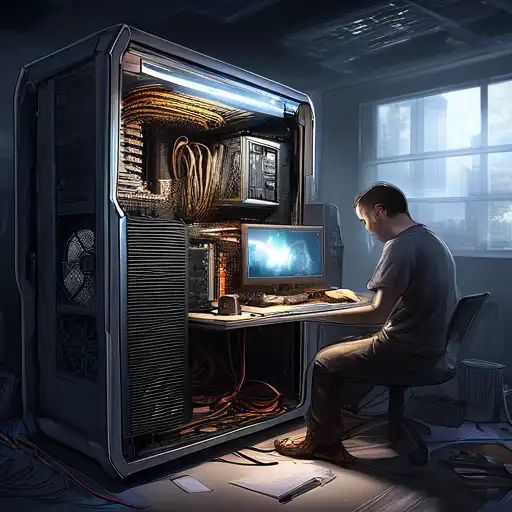Introduction to PC Building
Building your own PC can be a rewarding experience, offering both personal satisfaction and the opportunity to create a machine that perfectly fits your needs. Whether you're a gamer, a content creator, or just someone looking for a custom computing solution, this guide will walk you through the basics of assembling your own computer.
Why Build Your Own PC?
Building your own PC allows you to customize every component to your specific requirements, often resulting in better performance and value than pre-built options. Plus, it's a great way to learn about how computers work.
Essential Components for Your Build
Before you start, you'll need to gather all the necessary components. Here's a list of the essential parts:
- Processor (CPU)
- Motherboard
- Memory (RAM)
- Storage (SSD/HDD)
- Graphics Card (GPU)
- Power Supply Unit (PSU)
- Case
- Cooling System
Step-by-Step Assembly Guide
Now that you have all your components, it's time to start building. Follow these steps to assemble your PC:
- Prepare your workspace and ensure you have all the necessary tools.
- Install the CPU onto the motherboard carefully, aligning the pins correctly.
- Add the RAM sticks to the motherboard's RAM slots.
- Mount the motherboard inside the case.
- Install the storage drives (SSD/HDD) in the designated slots.
- Insert the graphics card into the PCIe slot on the motherboard.
- Connect the power supply and route the cables neatly for optimal airflow.
- Finally, install the cooling system to keep your components at safe temperatures.
Installing the Operating System
With your PC assembled, the next step is to install an operating system. Whether you choose Windows, Linux, or another OS, ensure you have a bootable USB drive or DVD ready for installation.
Tips for First-Time Builders
Building a PC for the first time can be daunting, but here are some tips to make the process smoother:
- Watch tutorial videos to familiarize yourself with the process.
- Double-check compatibility between components before purchasing.
- Take your time and don't force any components into place.
- Keep your workspace organized to avoid losing small parts.
Conclusion
Building your own PC is an exciting project that can save you money and give you a deeper understanding of computer hardware. With this guide, you're well on your way to creating a custom PC that meets all your needs. Remember, patience and preparation are key to a successful build.
For more information on choosing the right components, check out our Guide to Choosing PC Components.
